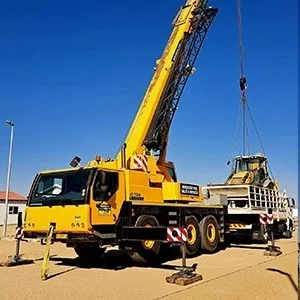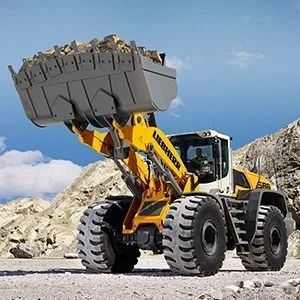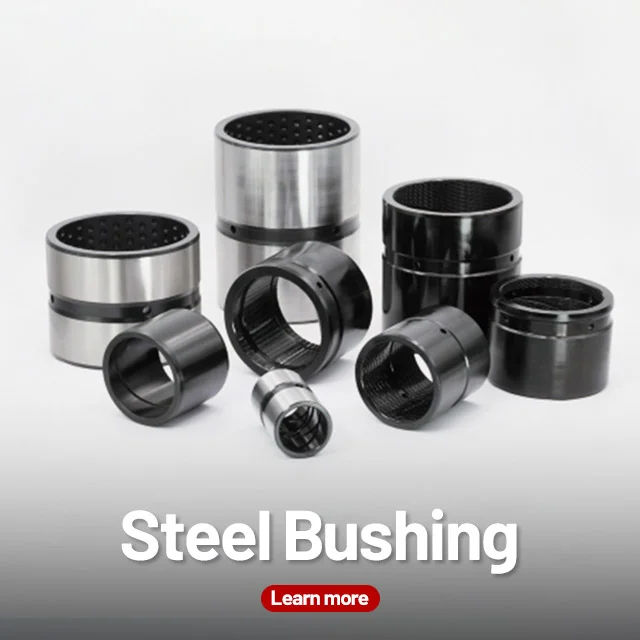
Product Overview
Powder metallurgy bushings are high-performance mechanical components produced using advanced powder metallurgy processes. Known for their excellent self-lubricating properties, high wear resistance, and cost-effectiveness, they are suitable for various industrial applications. Powder metallurgy bushings feature lightweight designs, customizable shapes, and optimized load distribution, ensuring reliable performance under different operating conditions.
Table Of Contents For This Page
To make sure you can find the information you want quickly,
we have prepared this content directory that will jump to the corresponding location when you click on it.
Bushing Material
Material Analysis
1. Bronze-Based Powder Metallurgy
- Advantages:
- Offers excellent thermal conductivity and wear resistance, suitable for high temperatures and medium-speed operation.
- Strong self-lubricating properties, ideal for applications with minimal maintenance needs.
2. Iron-Based Powder Metallurgy
- Advantages:
- High strength and good wear resistance, suitable for medium to high load and impact conditions.
- Can be surface-treated to enhance corrosion resistance, suitable for harsh environments.
3. Steel-Based Powder Metallurgy
- Advantages:
- Provides the highest strength and hardness, suitable for heavy loads and high-impact conditions.
- After heat treatment, it exhibits superior wear resistance and fatigue resistance.

Material Structure
1. Solid Sintered Structure
- Description: The powder metallurgy bushing adopts a solid sintering process, formed in a single step without seams, ensuring uniformity and structural stability.
- Advantages:
- Uniform Strength Distribution: Maintains even strength under high load and heavy impact conditions.
- High Precision Machining: Suitable for high-precision and high-strength applications.
2. Porous Structure
- Description: Formed through the sintering process, the porous structure allows the material to absorb and retain lubricating oil for self-lubrication.
- Advantages:
- Continuous Lubrication: Releases lubricating oil during operation, reducing friction and wear, ideal for long-term maintenance-free use.
- Low Friction Coefficient: Maintains low friction even under heavy loads and high-speed conditions.
3. Flanged Structure
- Description: Designed with a flange at one end for axial positioning and additional support.
- Advantages:
- Enhanced Axial Support: Effectively limits axial movement of the bushing, improving operational stability.
- Easy Installation: The flanged design simplifies installation, reducing assembly time.
4. Composite Laminate Structure
- Description: Produced using multi-layered pressing techniques, combining different materials to enhance overall performance.
- Advantages:
- Multi-Functionality: Combines self-lubrication, high wear resistance, and load-bearing capacity.
- Fatigue Resistance: Exhibits improved fatigue resistance during long-term operation.
Product Types
1. Oil-Impregnated Powder Metallurgy Bushing
- Material: Made from sintered bronze, iron, or steel, impregnated with lubricating oil.
- Features:
- Self-Lubricating: Contains lubricating oil that releases oil film during operation, enabling long-term maintenance-free use.
- High Wear Resistance: The sintering process ensures uniformity and high hardness, suitable for medium loads and medium-speed applications.
- Excellent Thermal Conductivity: Bronze-based material offers good heat dissipation, making it ideal for high-temperature environments.
2. Non-Oil Powder Metallurgy Bushing
- Material: Made from high-strength sintered iron or steel.
- Features:
- High Strength: The dense structure allows it to withstand high loads and heavy impacts, making it suitable for demanding environments.
- Corrosion Resistance: Special surface treatments enhance corrosion resistance, making it suitable for harsh conditions.
- Good Dimensional Stability: It maintains its shape over long-term use, ensuring stable operation of equipment.
Product Specifications & Parameters
We offer a variety of sizes and dimensions for powder metallurgy bushings to meet different equipment requirements. Below are common product specifications:
| Parameter | Oil-Impregnated Bushing | Non-Oil Bushing |
|---|---|---|
| Outer Diameter | 6mm – 150mm | 10mm – 200mm |
| Inner Diameter | 3mm – 130mm | 5mm – 180mm |
| Length | 5mm – 300mm | 10mm – 500mm |
| Density | 6.4 – 7.5 g/cm³ | 6.8 – 7.8 g/cm³ |
| Operating Temp | -20°C to 200°C | -40°C to 250°C |
| Tolerance | ±0.01mm | ±0.02mm |






Performance Testing & Certification
Our powder metallurgy bushings undergo rigorous testing to ensure reliability and stability in various industrial applications:
- Wear Resistance Test: Demonstrates excellent wear performance under high load and high-speed conditions.
- Self-Lubrication Test: Confirms that oil-impregnated bushings maintain low friction even without external lubrication.
- Compression Test: Shows that non-oil bushings maintain stable load capacity in high-pressure environments.
- Product Certification: All products comply with ISO 9001 quality management systems and RoHS standards.
Bushing Applications
Powder metallurgy bushings are widely used across various industries, suitable for different loads and environmental conditions:
1. Automotive Industry
- Component Use: Engine, transmission, suspension, and steering system bearings.
2. Home Appliances
- Component Use: Rotating bearings in washing machines, fans, air conditioners, and other household devices.
3. Industrial Equipment
- Component Use: Key bearings and support components in industrial pumps, compressors, and hydraulic systems.
4. Power Tools
- Component Use: Rotating components in drills, sanders, and saws.
5. Office Equipment
- Component Use: Sliding components and bearings in printers, copiers, and scanners.
6. Agricultural Machinery
- Component Use: Rotating and sliding parts in seeders, harvesters, and tractors.

Automobile

Truck

Tractor

Dump Truck

Excavator

Combine Harvester

Crane

Bulldozer

Loader

Graders
Custom Services and Solutions
Personalized Design Support
We understand that each customer’s needs may vary, which is why we offer customized solutions tailored to different equipment applications. We provideself-lubricating bushings in specific sizes, materials, and thicknesses to match your unique requirements. No matter what industry or application your equipment is used in, we can offer the optimal product selection to meet your needs.
Free consultation
Communicate with us to clarify the requirements
Free design
Customize your product according to your needs
Sample making
Confirm the drawings and arrange for sampling
Sample confirmation
Customer confirms sample and arranges production
Finished inspection
Inspect the finished product and arrange for shipment
FaQ
Are you a factory?
Of course, we are a manufacturer that can complete the entire production line from raw materials to finished bushing products.
What bushings do you production?
We mainly produce various self-lubricating bushings. Please refer to our product solutions or contact us for details
What is a bushing?
What is the general process for manufacturing bushings?
Bushing manufacturing involves several key steps:
Material Selection: Choosing the appropriate material such as bronze, rubber, or plastic, depending on the application.
Forming: Techniques like casting, pressing, or extrusion are used to shape the raw material into a bushing.
Heat Treatment: For metal bushings, heat treatment is applied to increase strength and wear resistance.
Finishing: This step involves precision machining to achieve the required dimensional tolerances and surface finish.
Surface Treatment: A coating may be applied for corrosion resistance or lubrication purposes, such as zinc plating or Teflon coating.
What materials are commonly used in bushing production?
Common materials used in bushings include:
Bronze: Known for its durability and low friction, often used in heavy-duty applications.
Rubber: Used for vibration dampening in automotive and machinery applications.
Nylon/Polymer (like PTFE): Provides self-lubrication and is ideal for low-load, low-friction environments.
Steel: Used for high-load applications, often combined with a softer material like bronze or plastic as the lining.
How are bushing dimensions and tolerances maintained during production?
What surface treatments are used for bushings?
Bushings often undergo surface treatments to enhance their properties:
Zinc or nickel plating: Protects the metal surface from corrosion.
Teflon (PTFE) coatings: Provide low friction and self-lubricating properties.
Phosphating or black oxide coating: Improve wear resistance and reduce the potential for galling (severe adhesion between surfaces in motion).
What are the challenges in bushing production?
Key challenges include:
Maintaining precision: Ensuring dimensional accuracy across large production runs can be difficult, especially for complex shapes.
Material selection: Using the wrong material could result in failure under stress or environmental conditions.
Surface finish quality: Achieving smooth surface finishes is crucial to reducing friction and wear.
Can bushings be custom-made?
What environmental factors are considered in bushing production?
Manufacturers consider several environmental aspects:
Material sustainability: Using eco-friendly or recyclable materials.
Waste management: Minimizing production waste and properly handling hazardous materials.
Energy consumption: Optimizing energy use in production processes to reduce carbon footprint.
What is the purpose of a bushing?
How can I tell when a bushing needs to be replaced?
Signs that a bushing may need replacement include:
Cracks, splits, or visible damage.
Increased noise, such as squeaking or grinding.
Excessive play or movement in the component where the bushing is installed.
Vibration or instability in the machinery or equipment.
How do I maintain bushings?
What is the difference between a bushing and a bearing?
How long do bushings last?
More Related Bushing products
Contact Us for More Information
We not only provide high-quality self-lubricating bushings but also offer comprehensive technical support and after-sales service to ensure your equipment always operates at peak performance. If you have any questions or need a quote, please feel free to contact us at any time.
Tel/Whatsapp: +86 136 4583 4002
Email:ivan@mybushing.com





